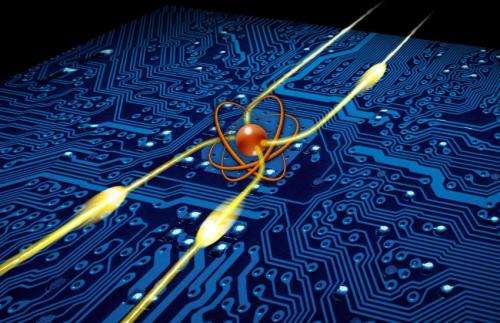LSPR energy to nanoelectric function of matter and environment, shape and size of light-sensitive nanoparticles (nano-electrical-optical devices) PhD nano-microelectronics
Researcher and author: Dr. ( Afshin Rashid)
Note: LSPR energy is sensitive to the dielectric performance of the material and its environment, the shape and size of the nanoparticles. That is, if a protein-like ligand binds to the surface of metal nanoparticles, its LSPR energy changes. Similarly, the effects of LSPR are sensitive to other changes, such as the distance between nanoparticles, which can change in the presence of surfactants or ions.
One of the consequences of the effect of LSPR on metal nanoparticles is the ability to absorb highly visible waves due to the consistent oscillations of the pulsons. Cloud Yydhay metal nanoparticles such as silver or gold can be colors like red, purple or orange to show that ordinary size is not. This color change depends on the shape, size and environment of the silver nanoparticles. In the structure of optical nanosensors, one of the distinguishing nanoparticles of metal nanoparticles from these materials on a large scale is their optical properties. This is due to localized surface pulsed resonance . In other words, when light strikes (metal surfaces) of any size, some light waves along the metal surfaces create a surface pulsation. In fact, these waves give part of their energy to the surface electrons and cause them to vibrate (scattered). ) be. When pulsons are produced in bulk metals, electrons can move freely in materials without registering any effect. In nanoparticles, the surface pulson is placed in a limited space, so that the electrons oscillate back and forth in this small space in the same direction . This effect is called localized surface pulsed resonance (LSPR). When the frequency of these oscillations is the same as the frequency of the light producing the pulse, the pulse is said to be in contact with light in resonance.
Light absorption also occurs in ordinary materials that have a continuous energy band, and electrons are transferred from the capacitance band to the conduction band. However, heat energy can also excite electrons to the conduction band. Nanoparticles, like atoms, have discrete energy levels. Hence it is also called artificial atom nanoparticles. Nanoparticles below 01 nm and especially semiconductor nanoparticles are also called quantum dots. By changing the size of the nanoparticles, the distance between the energy levels in them changes. The smaller the size of the nanoparticles, the greater the distance between the energy levels and the forbidden band, and the larger the particle size, the smaller the distance between the energy levels . This makes it possible to adjust the distance between their energy levels by changing the size of the nanoparticles to accommodate specific waves. Absorb. For example, the dimensions of nanoparticles of a certain material can be adjusted to absorb infrared, ultraviolet, radio, etc. waves . This feature is widely used in military and electronics industries.
Conclusion :
LSPR energy is sensitive to the dielectric performance of the material and its environment, the shape and size of the nanoparticles. That is, if a protein-like ligand binds to the surface of metal nanoparticles, its LSPR energy changes. Similarly, the effects of LSPR are sensitive to other changes, such as the distance between nanoparticles, which can change in the presence of surfactants or ions.
Researcher and author: Dr. ( Afshin Rashid)
PhD in Nano-Microelectronics




